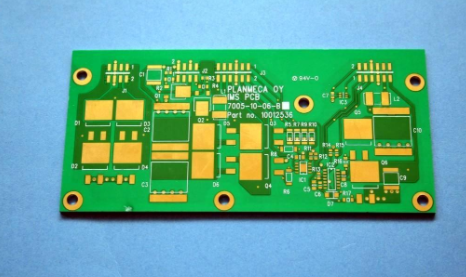PCBnegative film: generally we talk about the tenting process. The chemical solution used is an acid etching negative film because after the film is made, the required circuit or copper surface is transparent, and the unwanted part is black. After the process is exposed, the transparent part is chemically cured by the dry film resist being exposed to light. The subsequent development process will wash away the uncured dry film, so during the etching process, only the part of the dry film that has been washed away will be etched. Copper foil (the black part of the negative), while leaving the dry film unwashed, belongs to the circuit we want (the transparent part of the negative)

PCB positive film: generally we talk about the pattern process. The chemical solution used is alkaline etching positive film. If viewed from the negative film, the required circuit or copper surface is black, and the other part is transparent. The same goes through After the circuit process is exposed, the transparent part is chemically hardened due to the dry film resist being exposed to light. The next development process will wash off the unhardened dry film, followed by the tin-lead plating process, and the tin-lead is plated in the front One process (development) on the copper surface washed away by the dry film, and then remove the film (remove the dry film hardened by light), and in the next process of etching, use alkaline solution to bite off the copper that is not protected by tin and lead Foil (the transparent part of the negative), the rest is the circuit we want (the black part of the negative)
Positive film and negative film are actually selected according to the process of each company. Positive film: the process is (double-sided) cutting-drilling-PTH (one-time plating is also called thick copper)-circuit-two copper (pattern plating) and then SES Line (removal film-etching-removal tin) negative film: the process is (double-sided) cutting-drilling-PTH (one-time plating is also called thick copper)-line (not through two copper pattern plating) and then take the DES line (etching -Remove film)
1. Distinguish the master film (negative film), working film, positive and negative film, and film surface: film has master film and working film (child film), black film and yellow film, positive film and negative film; 2. Generally speaking, the master film For black film, also known as silver salt film, it is mainly used to copy work film (yellow film is also called diazo film), but work film is not necessarily only yellow film. There are also black film for work film, which is mainly used for high-precision HDI. In order to save money, it can be used in the production of one-off low-volume circuit boards. The yellow film is used in the manufacture of ordinary boards and batches of ordinary circuit boards. 3. When distinguishing the medicinal film surface, the black and smooth surface is the medicinal film, while the yellow film is the opposite. Generally, you can see which side is the medicinal film by scraping on the film with a scraper or a blade. (Master film: orthographic positive medicine surface, sub-film: orthographic negative medicine surface) 4. Pay attention to the use of yellow tablets: there are two types of smooth and matte surfaces. The two types are prone to indentation on the oil surface. 5. The light-transmitting negative film on the film circuit (with copper), the opaque film is the positive film; the positive film is used for pattern electroplating, the circuit is developed, and the remaining function is anti-corrosion electroplating, which is mainly plated with lead and tin . The negative film is used for direct etching, and the resist left after development is a circuit, which is directly etched with an acid etching solution.
The above is the introduction of the difference between positive and negative PCB circuit boards. Ipcb also provides PCB manufacturers and PCB manufacturing technology.